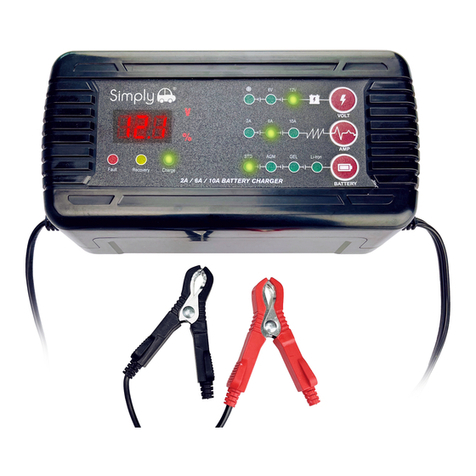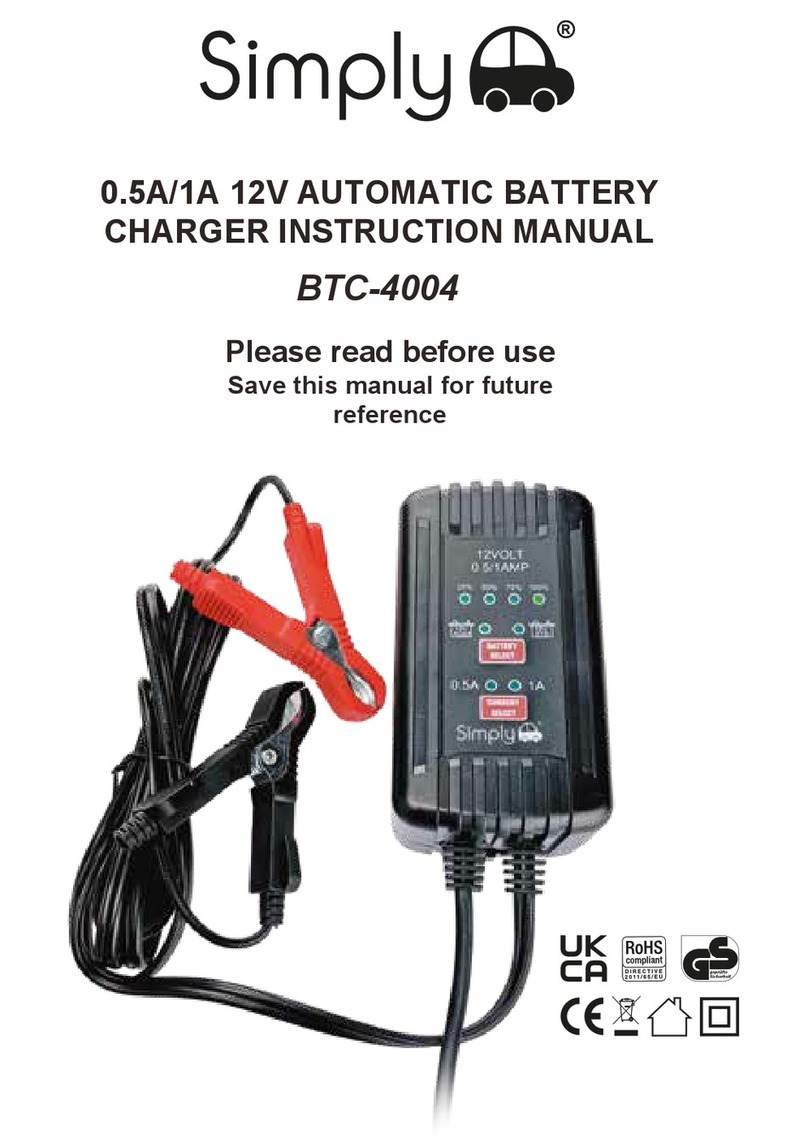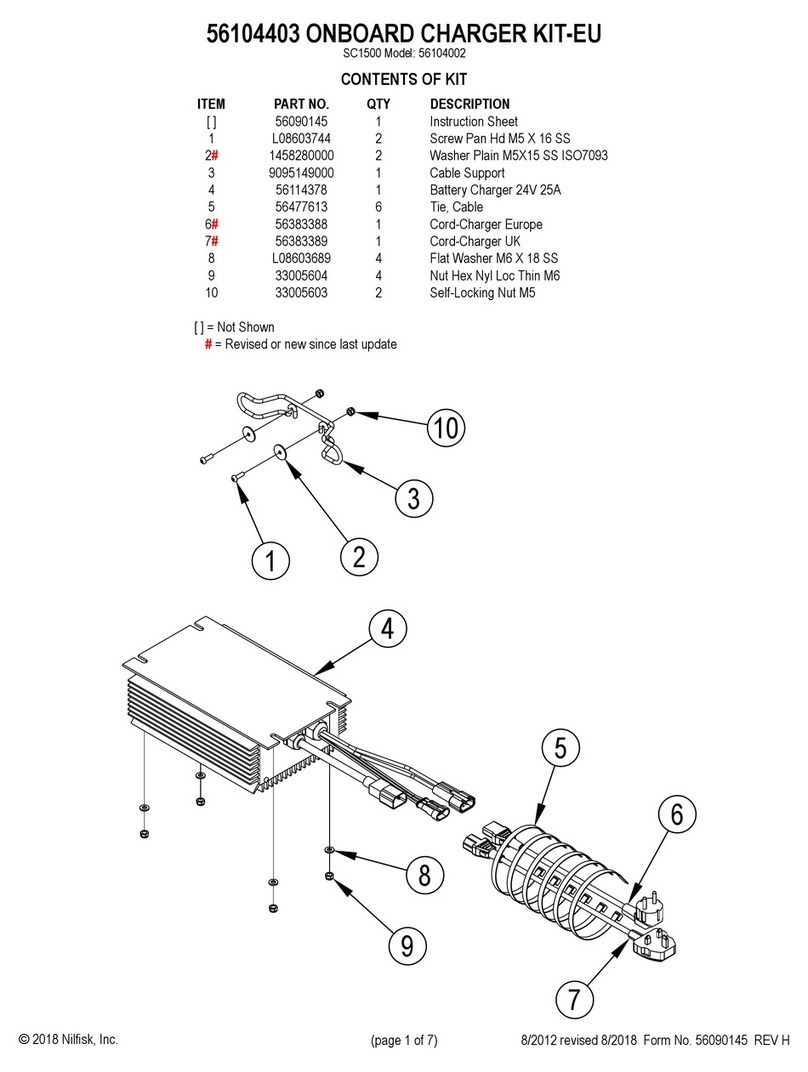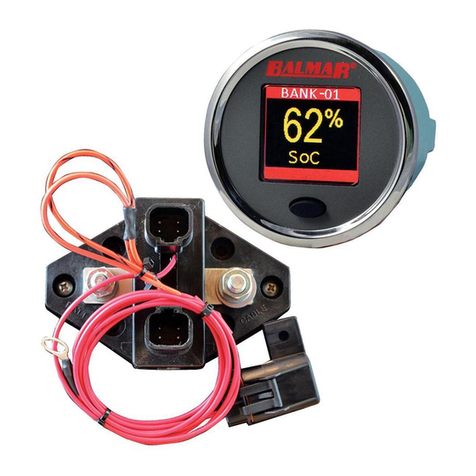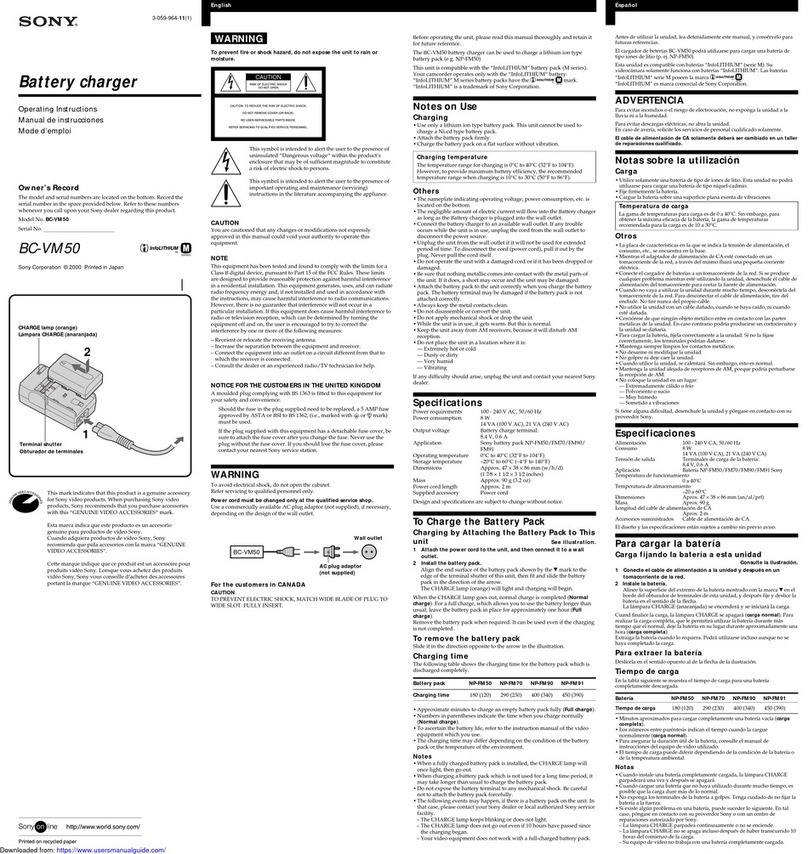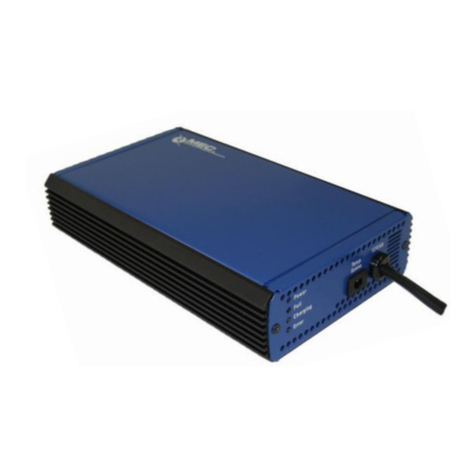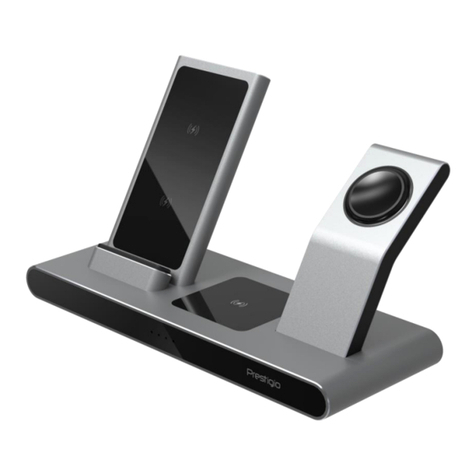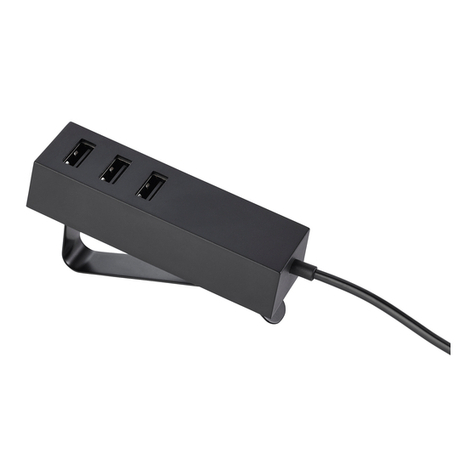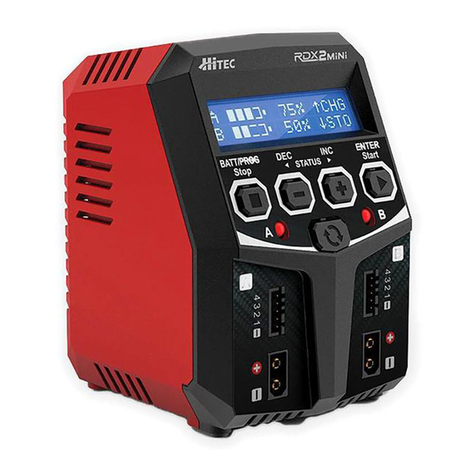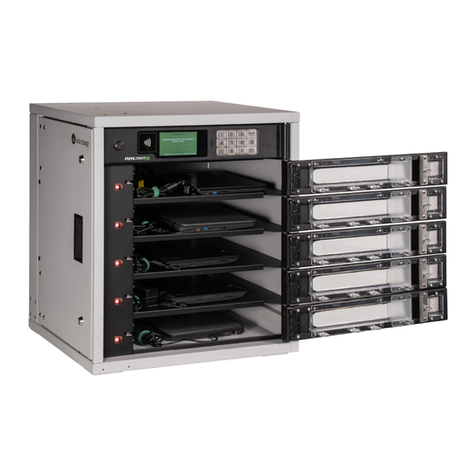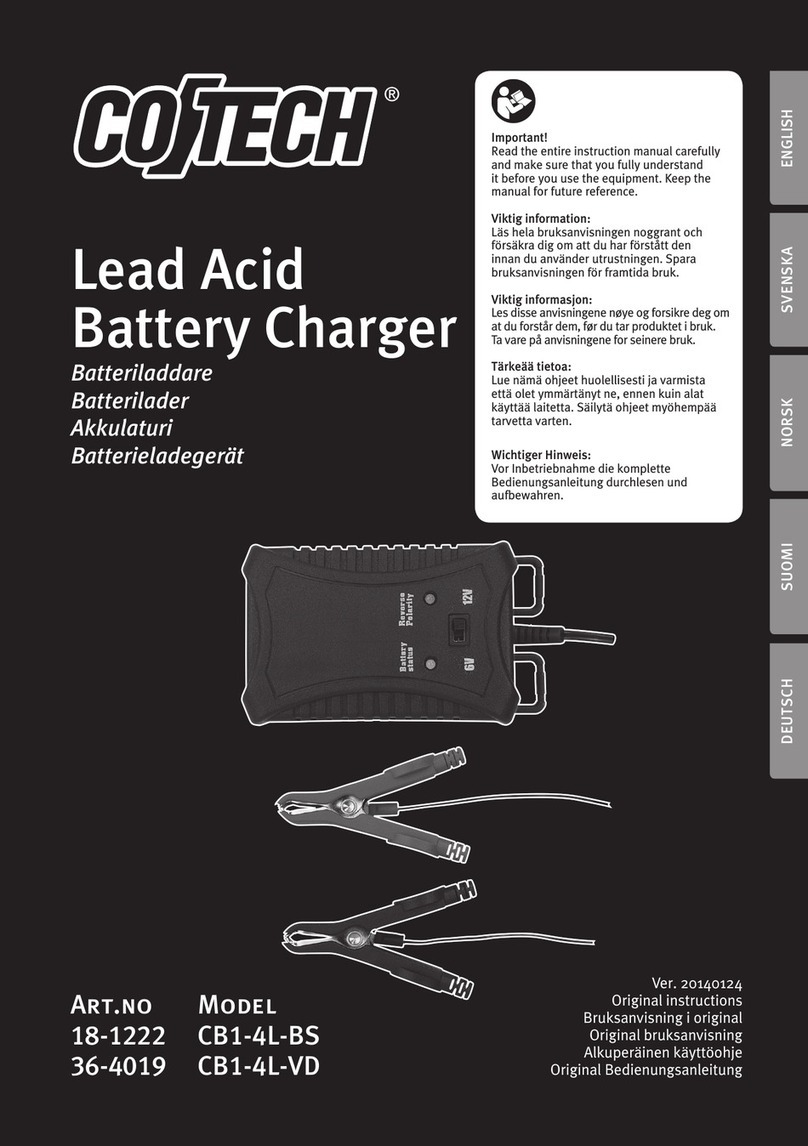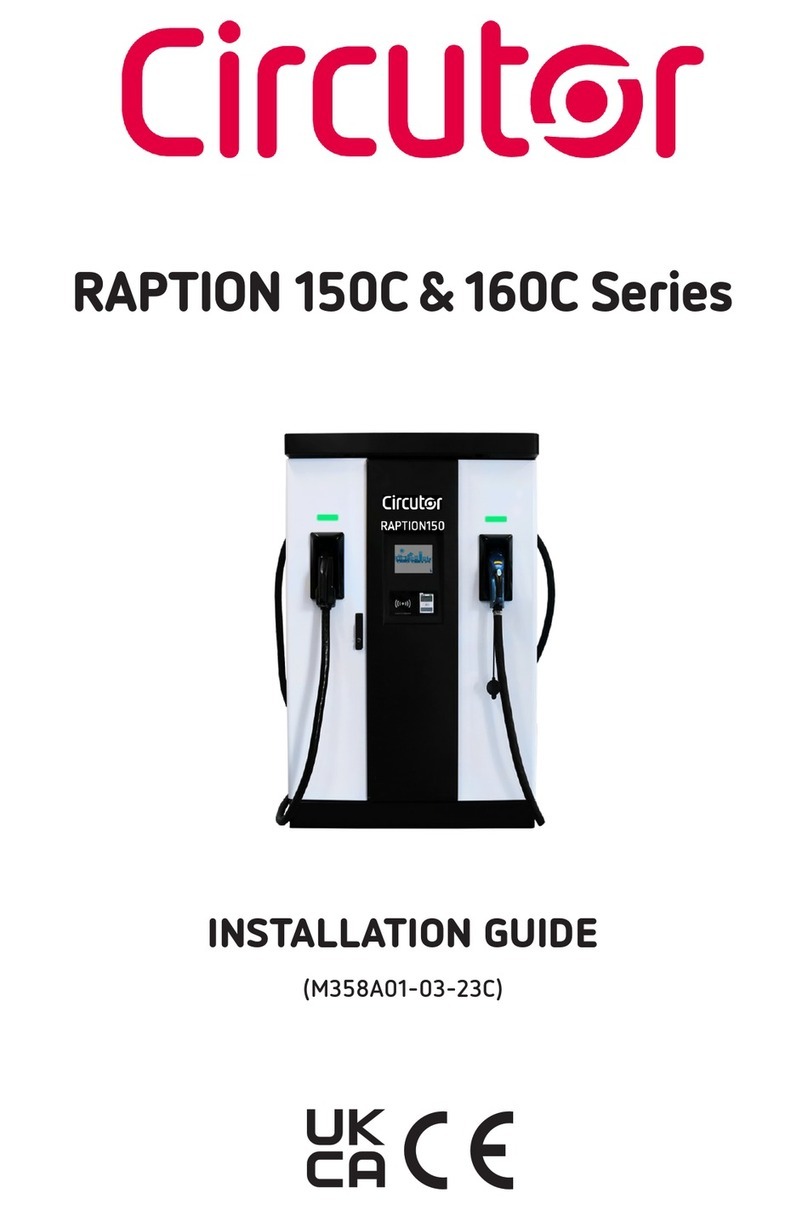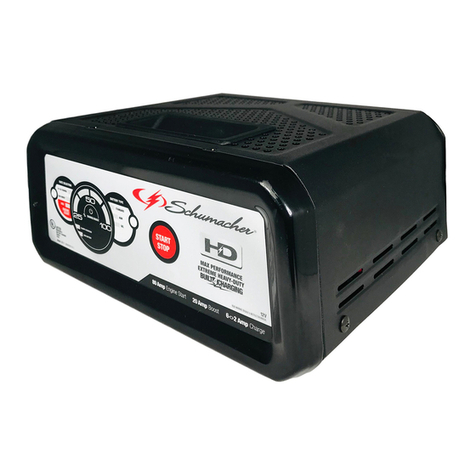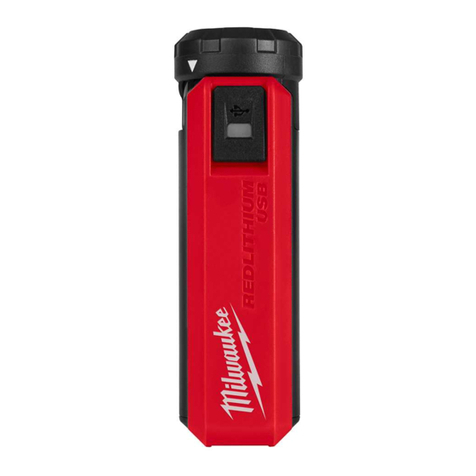Simply BTC-6010 User manual

BTC-6010
Please read before use
Save this manual for future
reference
2A/6A/10A 6V/12V AUTOMATIC
BATTERY CHARGER
INSTRUCTION MANUAL

•Do not set the charger on flammable materials, such as carpeting, upholstery, paper,
cardboard, etc.
Never smoke or allow sparks or flames in the vicinity of the battery or engine.
•
SAFETY GUIDELINES/DEFINITIONS
• DANGER: Indicates an imminently hazardous situation which, if not avoided, will result
in death or serious injury.
• WARNING: Indicates a potentially hazardous situation which, if not avoided, could
result in death or serious injury.
• CAUTION: Indicates a potentially hazardous situation which, if not avoided, may result
in minor or moderate injury.
• CAUTION: Used without the safety alert symbol indicates potentially hazardous
situation which, if not avoided, may result in property damage.
• RISK OF UNSAFE OPERATION. When using tools or equipment, basic safety
precautions should always be followed to reduce the risk of personal injury. Improper
operation, maintenance or modification of tools or equipment could result in serious injury
and property damage. There are certain applications for which tools and equipment are
designed. Simply Auto strongly recommends that this products NOT be modified and/or
used for any application other than for which it was designed. Read and understand all
warning and operating instructions before using any tool or equipment.
IMPORTANT SAFETY INSTRUCTION
WARNING-RISK OF EXPLOSIVE GASES
WORKING IN THE VICINTY OF A LEAD-ACID BATTERY IS DANGEROUS.
BATTERIES GENERATE EXPLOSIVE GASES DURING NORMAL OPERATION.
FOR THIS REASON, IT IS IMPORTANT THAT YOU FOLLOW THESE INSTRUCTIONS
EACH TIME YOU USE THE CHARGER.
To reduce the risk of a battery explosion, follow these instructions and those published
by the manufacturers of the battery and any equipment you intend to use in the vicinity of
the battery. Review the cautionary markings on these productions and on the engine.
WARNING: Do not use battery charger with dry cell batteries that are commonly used
with home appliances. These batteries may burst and cause injury or damage to property.
• Use only attachments recommended or sold by the battery charger’s manufacturer.
Use of non-recommended attachments may result in a fire, electric shock, or injury.
• Locate the battery charger’s power cord so it cannot be stepped on, tripped over, or
subjected to damage or stress.
• Do not operate the charger if it has received a sharp blow, been dropped, or otherwise
damaged in any way. Take it to a qualified professional for inspection or repair.
• Do not disassemble the charger. Take it to a qualified professional when service or
repair is required.
• To reduce the risk of electric shock, unplug the charger from the outlet before attempting
any maintenance or cleaning.
• Always charge the battery in a well-ventilated area.
WARNING:This product contains chemicals known to cause cancer and birth defects or
other reproductive harm. Wash hands after handling. Wash hands after handling. Use the
battery charger on 6V/12V AGM/STD/GEL/LION batteries, as used in cars, vans, lorries,
tractors, airplanes, motorhomes, etc. This charger is not intended to supply power to
low-voltage electrical systems, other than in a motor-starting application.

WARNING: RISK OF EXPLOSIVE GAS.
• Operate the charger as far away from the battery as DC charger cablespermit.
• Do not expose the charger to rain or snow.
• NEVER charge a frozen battery.
• NEVER set a battery on top of the charger.
• NEVER place the charger directly above a battery being charged. Gases from the
battery will corrode and damage the charger.
• NEVER touch the battery clips together when the charger is energized.
• When disconnecting the battery charger, pull by the plug, not by the cord. Pulling
on the cord may cause damage to the cord or plug.
• Do not operate the charger with damaged cord or plug.
• NEVER allow battery acid to drop onto the charger.
PERSONAL SAFETY PRECAUTIOUS
ASSEMBLY INSTRUCTIONS
Remove all cord wraps and uncoil the cables prior to using the battery charger.
This battery charger is for use on a nominal 230 volt circuit .
• Wear complete eye and clothing protection when working near lead-acid batteries.
Always have someone nearby for help.
• Have plenty of fresh water, soap and baking soda nearby for use, in case battery acid
contacts your eyes, skins, or clothing. Wash immediately with soda and water and seek
medical attention.
• If battery acid comes in contact with eyes, flush eyes immediately for a minimum of 10
minutes and get medical attention.
• Neutralize any acid spills thoroughly with baking soda before attempting to clean up.
• Remove all personal metal items from your body, such as rings, bracelets, necklaces
and watches. A battery can produce a short circuit current high enough to weld a ring to
metal, causing a severe burn.
• Do not drop a metal tool onto the battery.
• If it is necessary to remove the battery from the vehicle to charge it, always remove the
grounded terminal first.
This appliance can be used by children aged from 8 years and above and persons with
reduced physical, sensory or mental capabilities or lack of experience and knowledge if
they have been given supervision or instruction concerning use of the appliance in a safe
way and understand the hazards involved. Children shall not play with the appliance.
Cleaning and user maintenance shall not be made by children without supervision.
If the supply cord is damaged, it must be replaced by the manufacturer, its service agent or
similarly qualified persons in order to avoid a hazard.
The connection to the supply mains is to be in accordance with the national wiring rules.
(battery chargers for installation in caravans and similar vehicles)
The battery terminal not connected to the chassis has to be connected first. The other
connection is to be made to the chassis, remote from the battery and fuel line. The battery
charger is then to be connected to the supply mains.
8.After charging, disconnect the battery charger from the supply mains. Then remove the
chassis connection and then the battery connection.
Do not recharging non-rechargeable batteries.
•
•
•
•
•
•

Preparing to Charge
1. Determine voltage of battery to be maintained by referring to the vehicle manual.
2. If it is necessary to remove battery from vehicle to charge, or to clean terminal, always
remove grounded terminal from battery first. Make sure all accessories in the vehicle
are off, so as not to cause an arc.
3. Clean battery terminals. Do not allow corrosion to come in contact with eyes.
4. Add distilled water in each cell until battery acid reaches level specified by battery
manufacturer. This helps purge excessive gas from cells. Do not overfill. For a battery
without cell caps (maintenance free), carefully follow manufacturer’s charging
instructions.
5. Study all battery manufacturer’s specific precautions, such as removing or not
removing cell caps while charging, and recommended rates of charge.
6. Remove battery completely from boat/airplane or any confined area before charging.
Area around battery should be well ventilated while battery is being charged. Do not
operate while an enclosed area.
CAUTION: This battery charger does not detect, diagnose or analyze the condition of
the battery. Attempting to charge/maintain a battery with an abnormal condition can
further damage the battery. If in doubt, have the battery checked by a qualified
professional prior to using this unit.
IMPORTANT: Do not start the vehicle with the charger connected to the AC outlet, or
it could result in damage to the charger.
Charger Location
1. Locate battery charger as far away from battery as cables permit.
2. Charge above freezing temperature and below40 degree Celsius(C) (104 degree
Fahrenheit).
3. NEVER place battery charger directly above battery being charged; gases from
battery will corrode and damage charger.
4. NEVER allow battery acid to drip on battery charger when reading gravity or filling
battery.
5. NEVER operate battery charger in a closed-in area or restrict ventilation in anyway.
6. Marine batteries must be removed and charged on shore. To charge it on board
requires equipment specially designed for marine use. This unit is NOT designed for
such use.
7. Do not set a battery on top of battery charger.
WARNING: A SPARK NEAR THE BATTERY MAY CAUSE AN EXPLOSION. TO
REDUCE RISK OF A SPARK NEAR THE BATTERY: CONNECT AND DISCONNECT
DC OUTPUT CLAMPS AND RING TERMINALS ONLY AFTER REMOVINGAC CORD
FROM ELECTRIC OUTPUT.
Connection Precautious
1. Disconnect AC cord from electric outlet before connecting or disconnecting DC clamps.
Follow these steps when the battery is installed in a vehicle:
1. Position AC and clamp cords away from hood, door, or moving engine parts.
2. Stay clear of fan blades, belts, pulleys, and other parts that can cause injury to persons.
3. Check polarity of battery posts. POSITIVE (POS, P, +) battery post usually has
larger diameter than NEGATIVE (NEG, N,-) post.

4. Determine which post of battery is grounded (connected) to the chassis. If NEGATIVE
post is grounded to chassis (as in most vehicles), see 5. If POSITIVE post is grounded
to the chassis, see 6.
5. For negative-grounded vehicle, connect POSITIVE (RED) clamp from battery charger
to POSITIVE (POS, P, +) engine block away from battery. Connect NEGATIVE
(BLACK) clamp to vehicle chassis or engine block away from battery. Do not connect
clip to carburetor, fuel lines, or sheet-metal body parts. Connect to a heavy gauge
metal part of the frame or engine block.
6. For positive-grounded vehicle, connect NEGATIVE (BLACK) clamp from battery charger
to NEGATIVE (NEG, N, -) ungrounded post of battery. Connect POSITIVE (RED) clamp
to vehicle chassis or engine block away from battery. Do not connect clip to carburetor,
fuel lines, or sheet-metal body parts. Connect to a heavy gauge metal part of the frame
or engine block.
7. When disconnecting charger, disconnect AC cord, remove clamp from vehicle chassis,
and then remove clamp from battery terminal.
8. Do not charge the battery while the engine is operating.
Follow these steps when the battery has been removed from a vehicle:
1. Check polarity of battery posts. Positive (marked POS, P, +) usually has a larger
diameter than the Negative battery post (marked NEG, N, -).
2. Connect the POSITIVE (RED) battery clamp to the POSITIVE battery post (marked
POS, P, + or red).
3. Stand as far back from the battery as possible, and do not face battery when marking
final connection.
4. Carefully connect the NEGATIVE (BLACK) charger clamp to the free end of the battery
cable connected to the NEGATIVE terminal.
5. When disconnecting charger, always do so in reverse sequence of connecting
procedure and break first connection while as far away from battery as practical.
• Check unit periodically for wear and tear. Take to a qualified technician for replacement
of worn or defective parts immediately.
• Read and Understand This Instruction Manual Before Using This Unit.
SAVE THESE INSTRUCTIONS
FEATURES:
•
•
•
•
Battery Select Button: This button allows you to change the charging mode for different
types of batteries(AGM battery,STD battery ,GEL battery or LION battery). Attention:
Battery Select Button won’t work during the process of charging.
Visualized Charging:Design with LCD screen which displays charging voltage/battery
capacity/mode,etc. Visualize charging,The battery charger let you know the current
charging process more conveniently.
7-Step Charging Program: Desulphation, Soft Start, Bulk Charge, Absorption, Battery
Test, Recondition and Floating. This allows for optimization of battery power, without
overcharging or damaging.
Excellent Winter Charging Mode: Specialized design for charging battery in winter
weather conditions to sustain a longer life of battery and to ensure perfect charging.

•
•
•
•
•
•
•
Battery Charger and Components
Safety Protection: Battery Charger has Over Voltage, Over Heat, Overtime Charging,
Short Circuit, and Reverse Polarity Protection to ensure users safety.
Maintains battery charger in stored vehicles.
Fully automatic; When the voltage of the battery is above 0.5V, battery charger will
automatically power on to charge the battery, and it will automatically power off when
battery is fully-charged.
Built-in circuit protection guards against overcharging or short circuit.
Automatically check the polarity(requires a minimum of 1.5 volts battery voltage).
Convenient, color-coded clamps for easy, correct installation.
Charges with high frequency, pure DC current.
①
⑤⑥⑦
②
③
④
1. LED Display
When charging, LED display reads the codes, to help user to learn charging status or trouble
code.
XX.X V
Battery voltage in volt.
XX %
Battery capacity level
REVERSE POLARITY
When clamps connected with battery reversely, LED display will show the code, FAULT
indicator light in red.

OPERATING INSTRUCTIONS
IMPORTANT: ALWAYS disconnect the AC power cord from AC power outlet before
connecting (or disconnecting) the charger to (or from) the battery.
Connecting the Charger and Charging the Battery with Battery Clamps
The charger’s output leads have color-coded battery clamps (RED-POSITIVE and
BLACK-NEGATIVE).
SHORT-CIRCUIT
When clamps connecting short-circuit, LED display will show the code, FAULT indicator light
in red.
WARNING OVERVOLTAGE
When charging batteries over rating voltage, LED display will show the code and stop output.
WARNING OVERHEAT
When charger internal temperature over 125°(257℉),it will stop output and shows code on
LCD display.
ANALYZING BATTERY
After constant charging stage, charger will analyze the battery for 1 min, LED display will
show the code.
RECONDITIONING
When battery recovery stage, LED display will show the code. Recovery yellow indicator will
light.
DEAD BATTERY
During pulse charging stage, after 10mins, if voltage lower than 8V, LED display will show the
code. And after recovery stage, if battery cannot be reconditioned , LED display will show the
code.
2. Voltage selector
The default setting is 12V, user can switch to 6V by selector button. And it also provide winter
mode.When in cold season, winter mode will help to improve charging efficiency.
3. Amperage selector
User can select right output current for different batteries.There are 3 options: 2A, 6A, 10A.
4.Battery type selector
User can select right battery type for different batteries. There are 4options: STD-including
regular lead-acid batteries, AGM, GEL, Li-iron batteries.
5.Fault indicator
When trouble happened during operation,fault indicator will light in red and showed with code
on LED display.
6.Recovery indicator
When recovery stage,indicator will light in yellow
7.Charge indicator
Duringcharging,indicator will light and flash.After fully charged,indicator will keep solid green.

1.Unplug the battery charger AC cord from the AC outlet.
2.Disconnect the battery clamps from the unit at output and cord connector
3.Plug the AC cord into the AC outlet (230V~ 50/60 Hz)
4.Press the battery selection and current selection to proper setting
5.Connect the RED POSITIVRE clamp to the POSITIVE post of the battery.
6.Connect the BLACK NEGATIVE clamp to the NEGATIVE post of the battery. (Note: if
reversely connect or short circuit, the "FAULT" indicator lit, and screen indicates "REVERSE
POLARITY" alternatively.)
7.Then the charger will charging the battery automatically.
8.Leave the unit on.
9.Monitor the battery from time to time.
CHARGING INSTRUCTIONS
1.Connect the battery charger to the mains power(230V AC):
Connecting 230V AC power supply,theLED display will show 888 in a loop.If the output is
in a short-circuit situation,the LED will indicate trouble code,please solve the problem.
2.Connecting the battery charger to your Battery
Check battery type and voltage according to battery manual,and choose right voltage and
current by selector.Connect the red clamp from the charger to the positive(+)battery
terminal.The Black clamp from the charger to the negative(-)battery terminal.(The trouble
code on LED display will indicate if output reverse polarity connection,please re-connect)
3.Start the charging
Connect AC plug to 230V power correctly,Select charging voltage 6v or12v battery (lf you
are not sure the battery type please read the batterys rating label first).Then connect both of
clamps with battery terminals, turn on the power switch and began charging, finally select
appropriate current.
4.Disconnecting the battery charger from your vehicle battery
When the battery is fully charged and ready for use,the LED will indicate and the charger
will output at a constant safe voltage at 7.2V(+0.25V) for 6V batteries or 14.3V(±0.25V) for
12V batteries.
TROUBLESHOOTING
WARNING: During troubleshooting, if there is a need to connect/disconnect the unit from
battery, follow the steps outlined in “Important Safety Instructions” at the front of this manual
and the warning “To reduce risk of a spark near the battery”.

Power On/Off Problem Reason Possible solutions
Power Off
&
Battery Connected
Power On
&
Battery Connected
Unit not charging,
the battery is not
connected
Screen indicates
" "
alternatively
The charging
indicator lits all
the time
The battery is
being fully
charged
Keep it away from being charged
The battery is
being restored
• Check that the charger is properly
connected to a live AC Outlet.
• Check that the correct battery
selection setting has been selected
for the battery being charged.
• Check that the correct current
selection setting has been selected
• If the current under charging state
has fallen below 0.5A, the charger
will not charge the unit
automatically.
• Make sure output connections are
secured.
• Check correct polarity connections.
Keep it being restored within 4 four
hours and if the voltage remain
unchanged,then the battery is a dead
one.
The restoring
indicator lits with
yellow LED light all
the time ,and and
Screen indicates
"RECONDITIONING"
alternatively
"FAULT" indicator
lit,and Screen
indicates "REVERSE
POLARITY"
alternatively
Battery reversed
connection Reversed the connection
"FAULT" indicator
lit,and Screen
indicates "SHORT
CIRCUIT"
alternatively
The clamps are
suffering the
short-circuit
situation
Re-connect the clamps carefully
"FAULT" indicator
lit,and Screen
indicates "WARN
-ING OVERHEAT"
alternatively
Over-heated Disconnect the battery charger to let it
cool down
"FAULT" indicator
lit,and Screen
indicates "DEAD
BATTERY"
Dead battery The battery is bad and needs replacing
Start Aid indicator lit
with green light,and
Screen indicates
"START AID"
alternatively
Start aid mode is
working
It will last for 60s at most and then
please turn it off

BATTERY CONNECTION
If the charger does not connected properly, charging will not start, Make sure the charger is
connected to the battery and the connection points are clean and making a good connection
or make sure no reverse connections at the battery.
CHARGING COMPLETION
Charge completion is indicated by the charging status indicator turning on ( LED indicator
shows fully charged state). This means that the charger has stopped charging. NOTE: If the
battery is not removed, the charger can detect the voltage. When battery voltage is lower
than 13.5V, the charger will charge for battery automatically.
MAINTAINGING A BATTERY
The unit maintains 12V batteries, keeping them at fully charged. It can charge small batteries
and maintain both small and large batteries. If you are maintaining a fully charged large
battery, you are properly utilizing the battery charger. However, if you use this battery charger
to charge a large battery, such as a marine deep-cycle battery, that was not fully charged,
you may lose some of the battery’s capacity. Therefore, we do not recommend charging a
large battery with this unit.
NOTE: The maintain mode technology utilized in this charger allows you to safely charge and
maintain a healthy battery for exhausted periods of time. However, problems with the battery,
electrical problems in the vehicle, improper connections or other unanticipated conditions
could cause excessive current draws. As such, occasionally monitoring your battery and the
charging process is recommended.
MAINTENANCE AND CARE
A minimal amount of care can keep your battery charger working properly for years.
• Clean the clamps each time you are finished charging. Wipe off any battery fluid that may
have come in contact with the clamps, to prevent corrosion.
• Occasionally cleaning the case of the charger with a soft cloth will keep the finish shiny
and help prevent corrosion.
• Coil the input and output cords neatly when storing the charger. This will help prevent
accidental damage to the cords and charger.
• Store the charger unplugged from AC power outlet, in an upright position.
• Store inside, in a cool, dry place. Do not store the clamps clipped together, on or around
metal, or clipped to the cables.
WARNING
1. It only can be used for 6/12V rechargeable AGM/STD/GEL/LION batteries.
2. The product should not be used under the water.
3. Ensure enough power supplying for the battery charger.
4. Never charging damaged battery in case of destroying battery charger.
5. To prevent potential danger, the battery charger should be away from heat object and
explosive gas during operation.
6. Do not change charger line or plug in order to avoid electric shock.
7. To prevent the battery charger from damage, the product should be away from children
and animals.
8. The battery charged needs to be checked to verify the input current beyond standard
output of charger.

SPECIFICATIONS PARAMETERS
• Input power supply: AC 230V 50/60Hz
• Maximum input power: 170W
• Output voltage: DC 6V/12V 2A/6A/10A
• Battery Type:6V/12V Lead-acid Battery
• Maximum output current: 10A
• Max.Capacity: 200AH
• Output Display: LED
WARNING:The charger is NOT suitable for lithium cobalt battery!
Meaning of crossed-out wheelie dustbin icon:
• Do not dispose of electrical appliances as unsorted municipal waste,
use separate collection facilities
• Contact your local government for information regarding the collection
systems available.
• If electrical appliances are disposed of in landfills or dumpshazardous
substances can leak into the groundwater and get into the food chain,
damaging your health and well-being
• When replacing old appliances with new ones,the retailer is legally
obligated to take back your old appliance for disposals at least free of charge.
9. Never charging on the condition that contains flammable and explosive gases.
10. Do not come close to the battery during charging.
11. The battery should be placed in ventilated well area.
12. The product should not be operated by children, those who have psychiatric disorders
and lack of experience, except that is supervised and instructed by supervisor.
13. Do not dismantle or repair privately if the charger damaged, bring it to certified service
center to repair.
SPECIAL NOTICE:
If the battery’s low voltage result in battery charging failure cause of instant complete release,
the battery need put aside for 1 hour until the battery voltage recover at proper range
Table of contents
Other Simply Batteries Charger manuals
